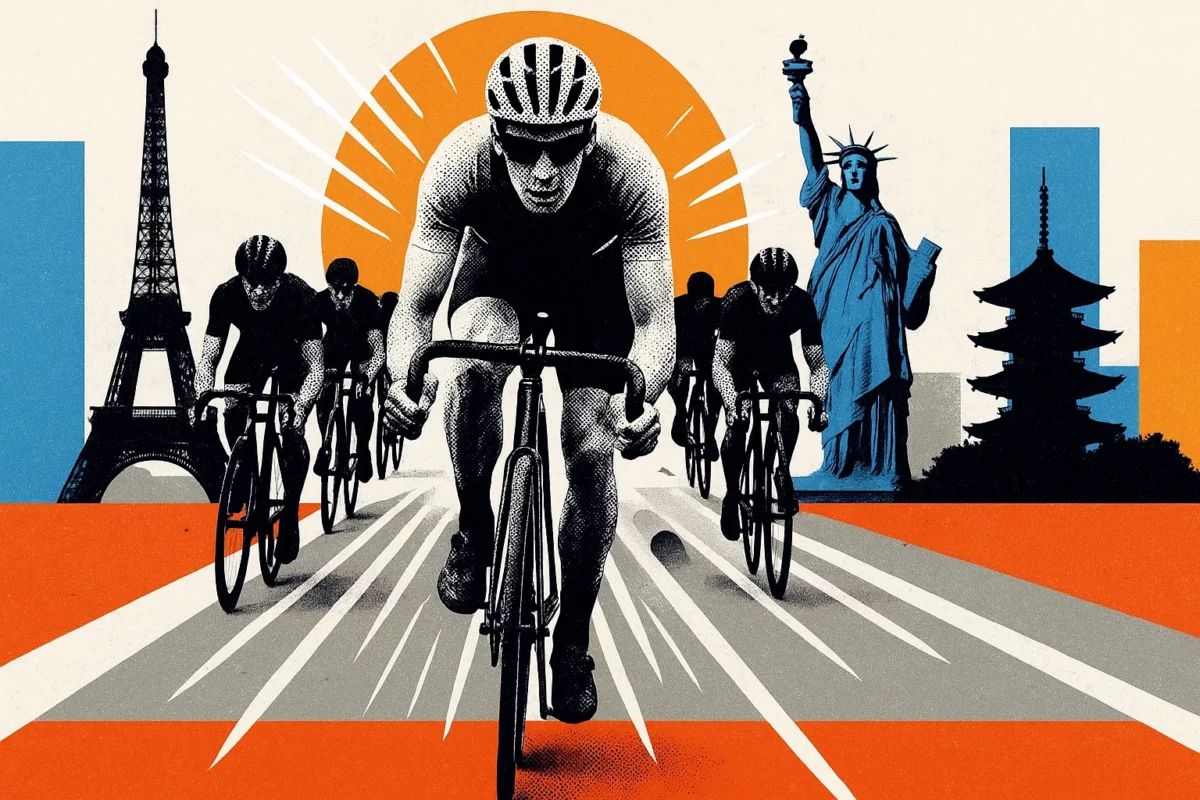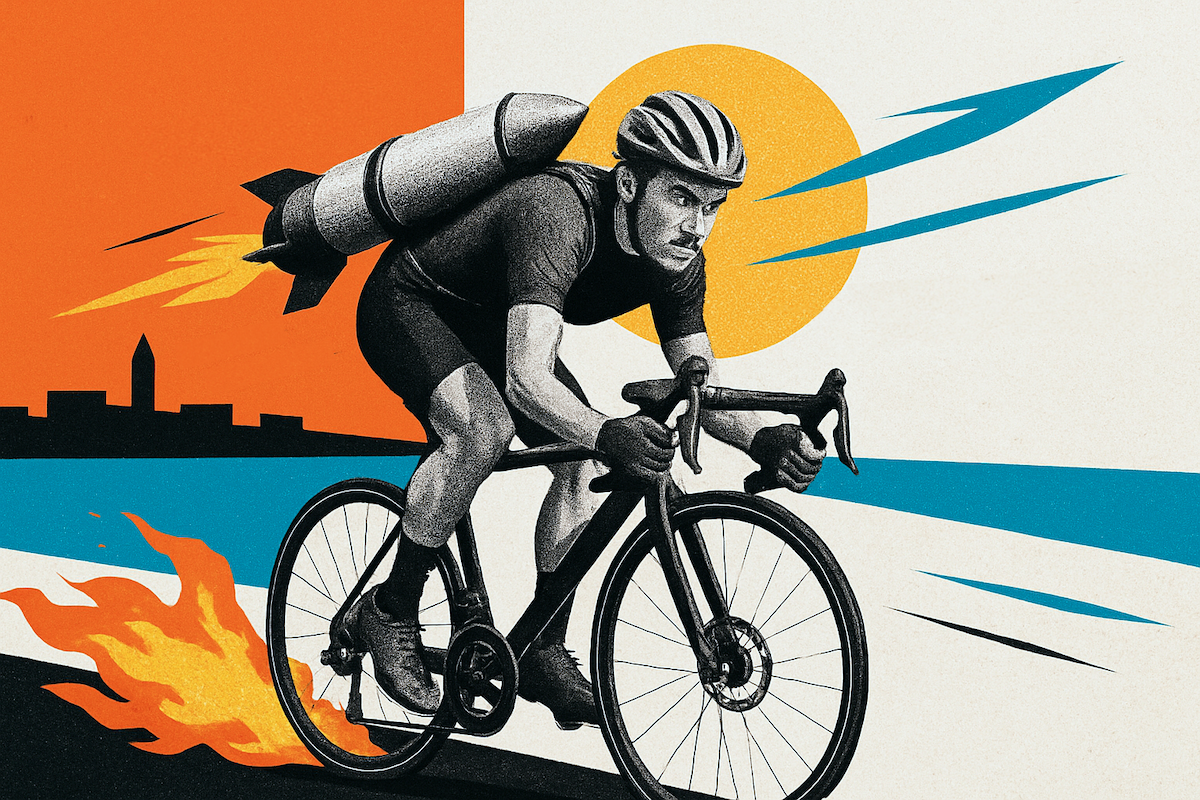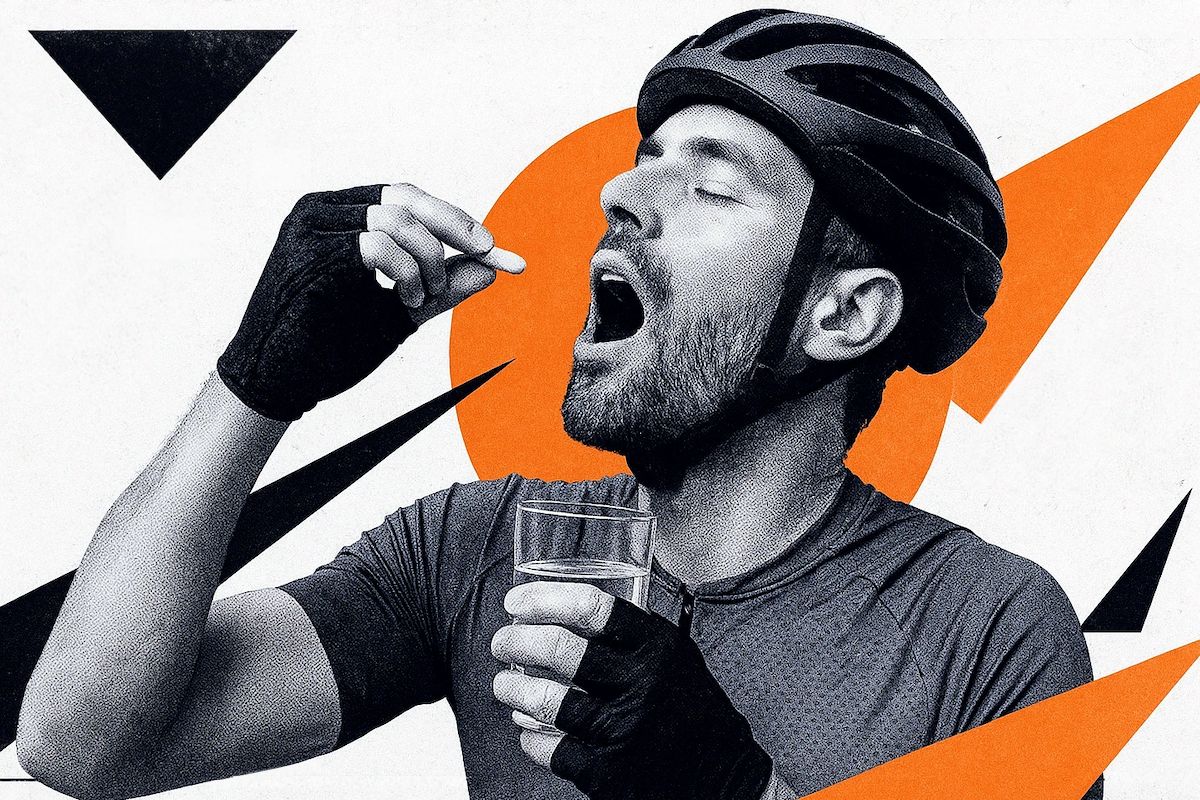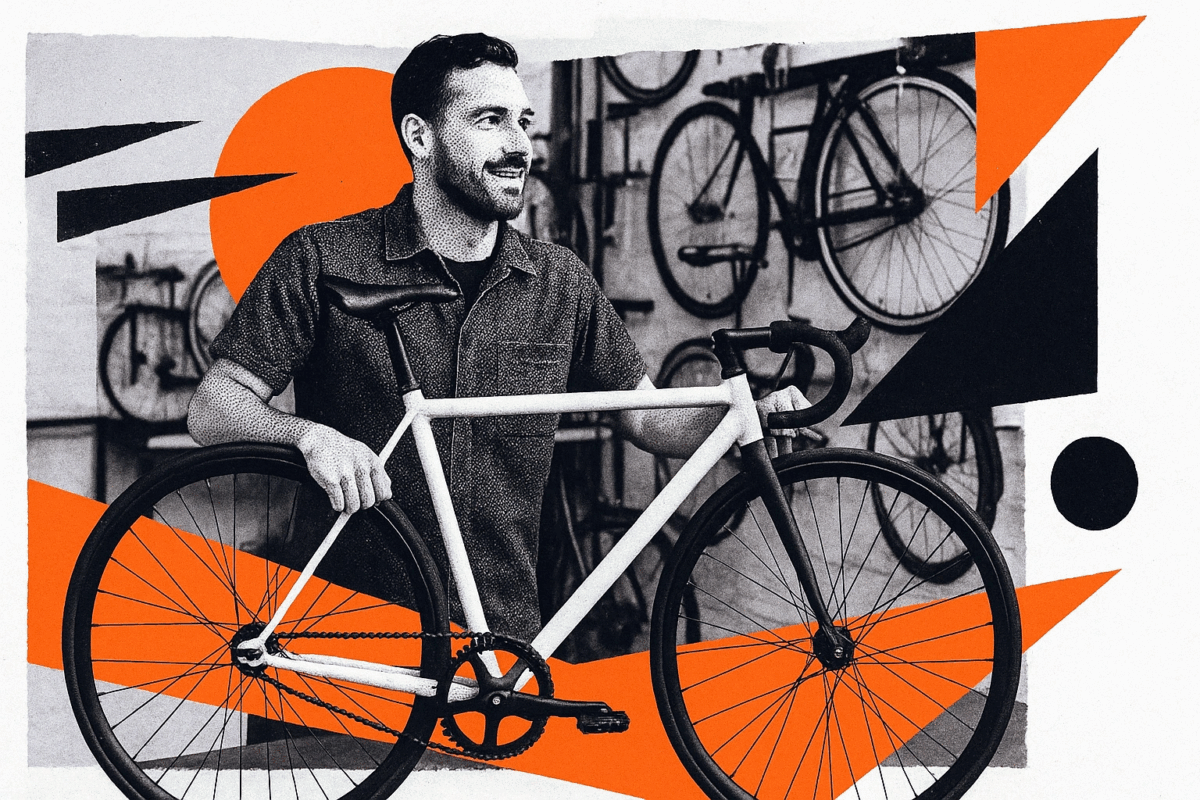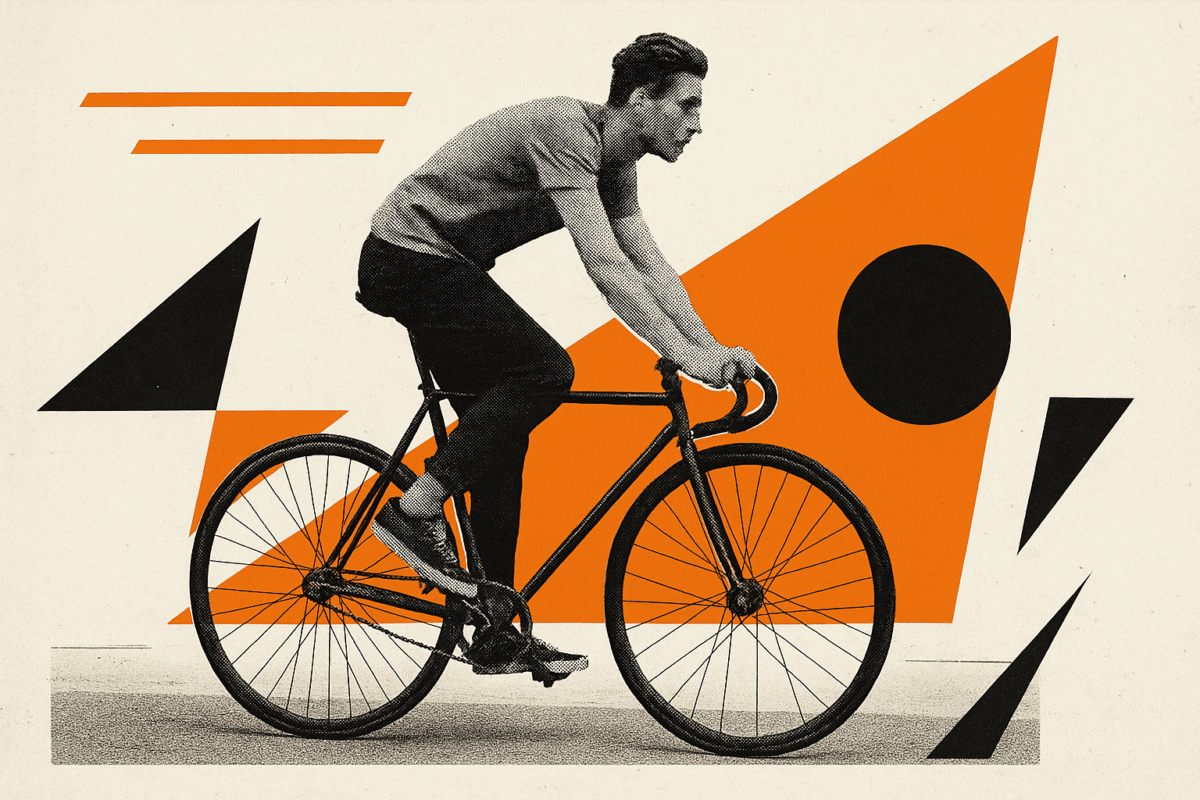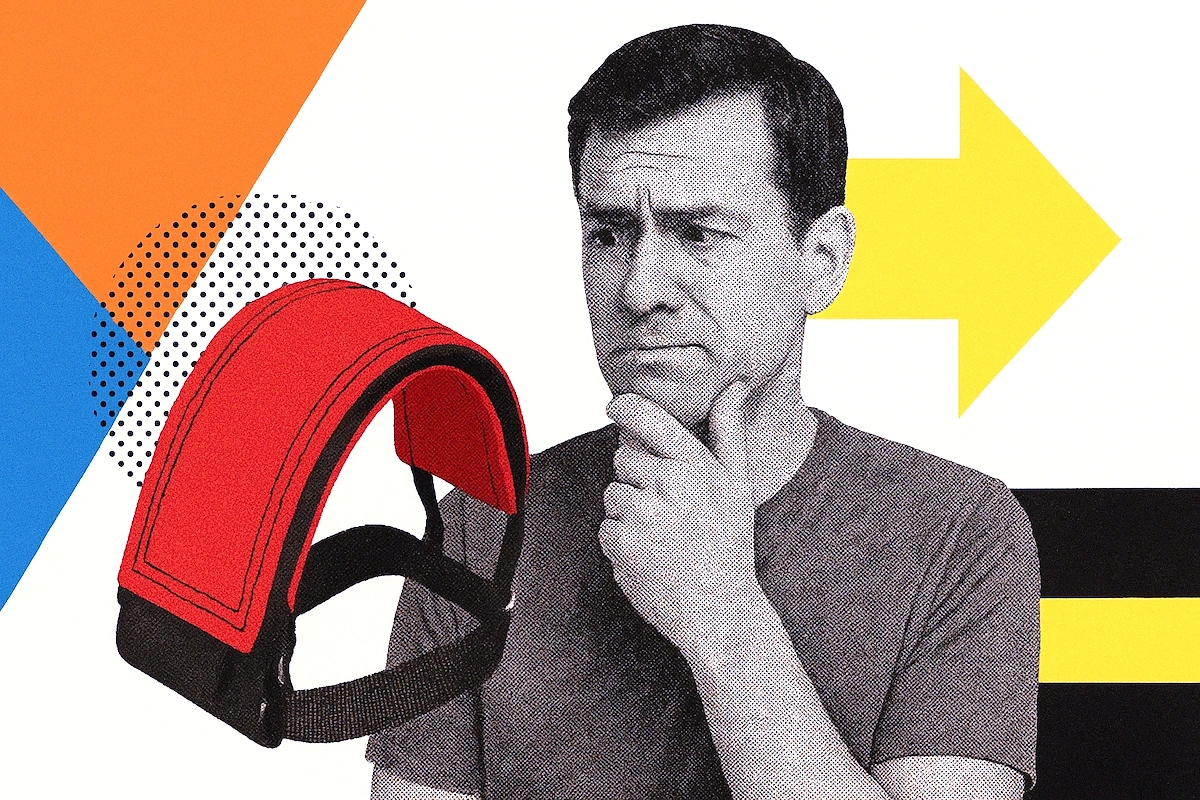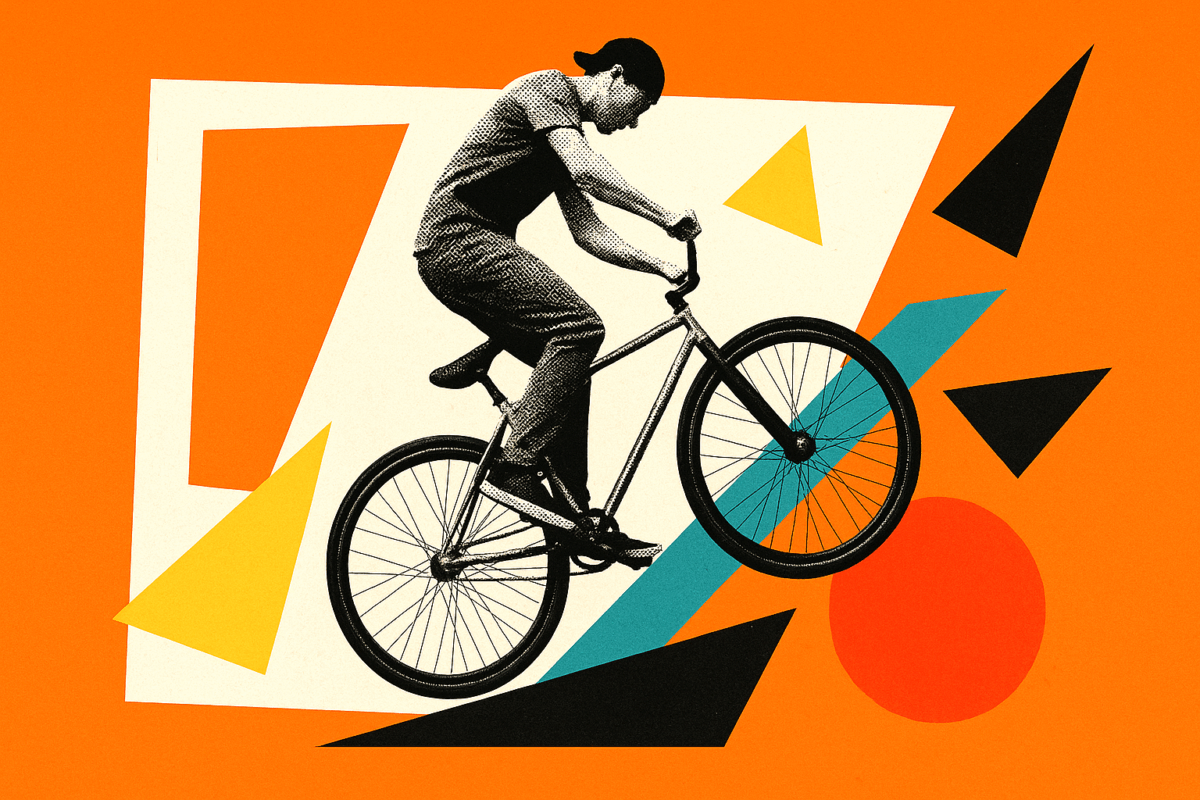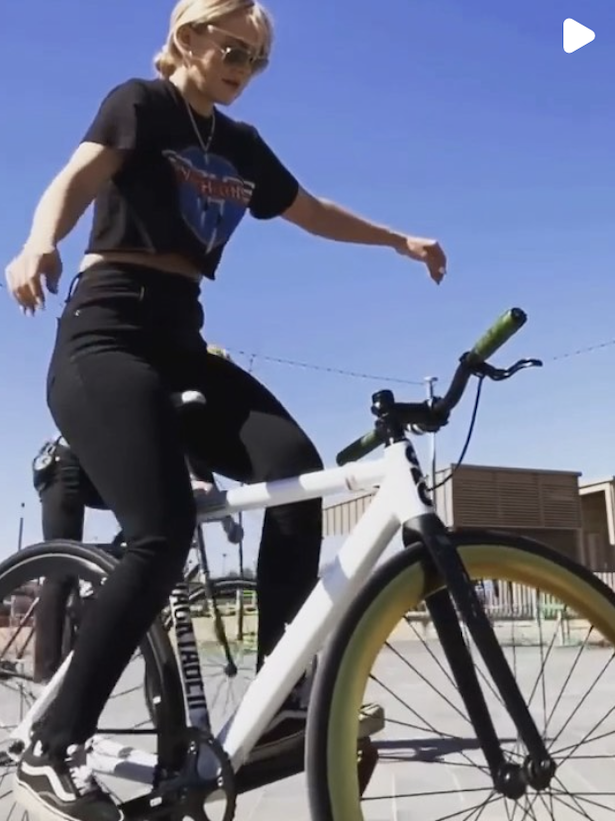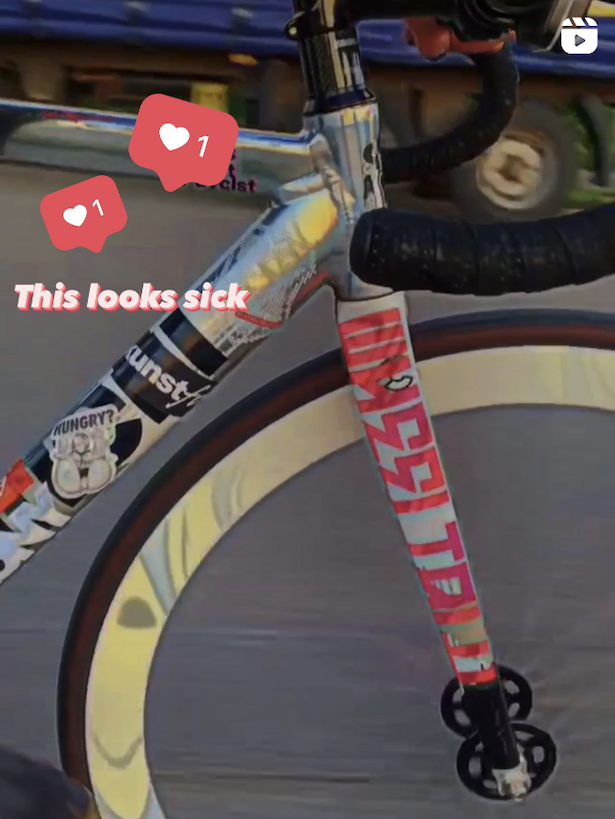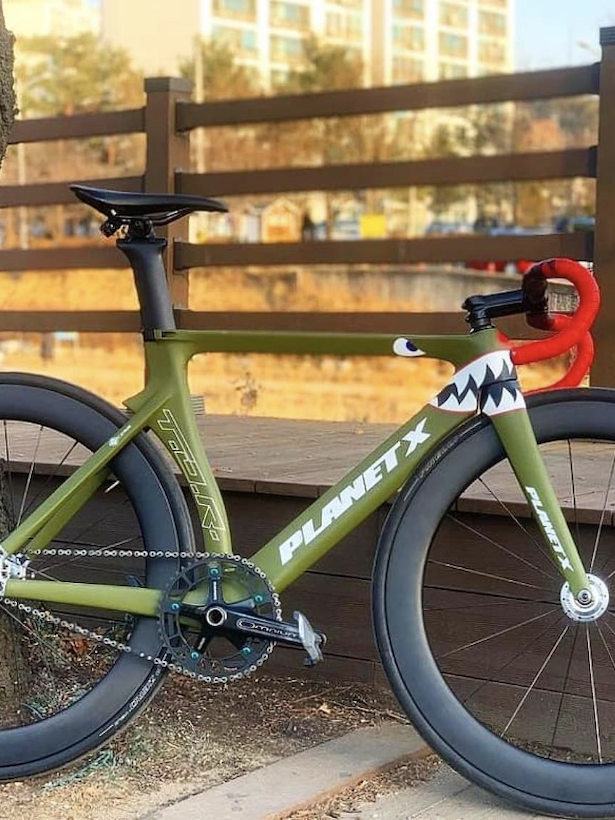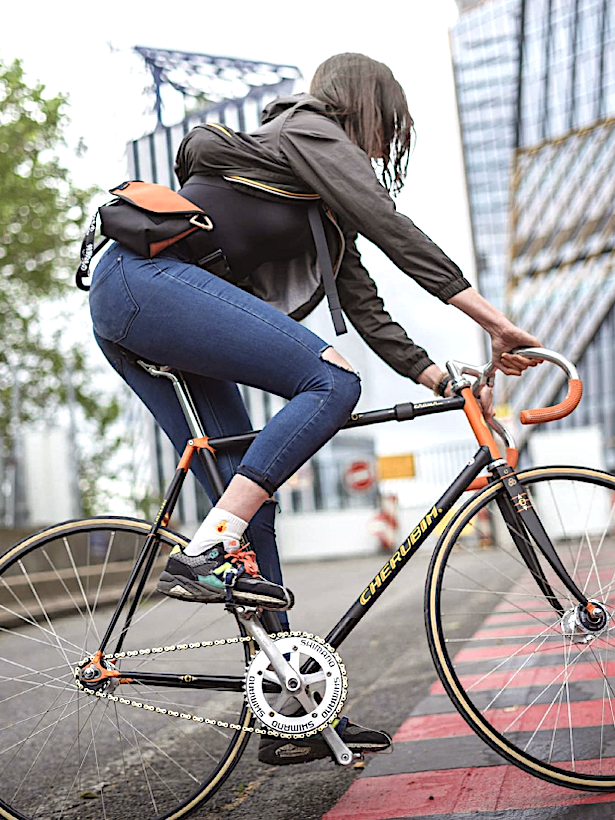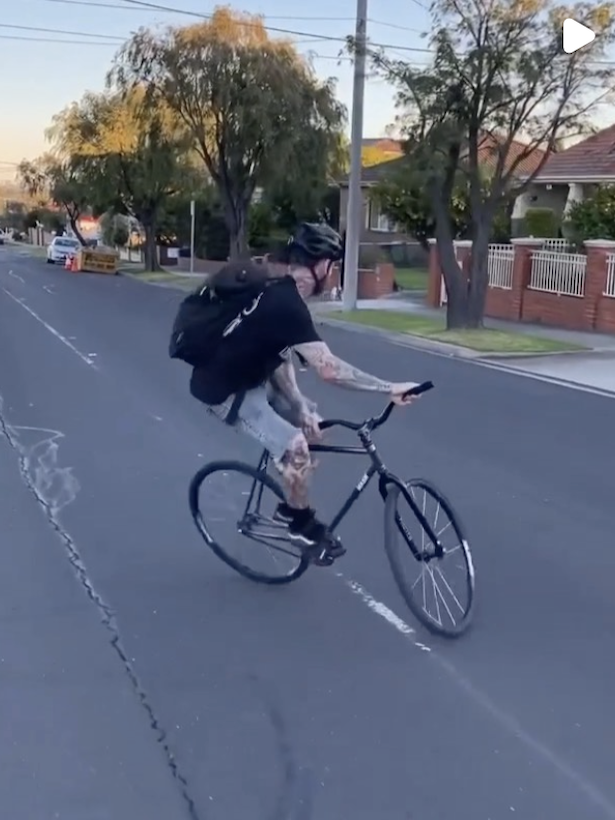
TL;DR:
- Your riding style determines everything—skidders need different tires than commuters or track riders
- Tire compound, width, and puncture protection are the only specs that actually matter for fixed gear
- Don’t run matching front and rear tires unless you’re on the track; your rear wears 3-4x faster
- Price doesn’t equal performance for fixed gear—expensive tires make sense up front, cheap makes sense for skidding rear wheels
Your rear tire is flat again. Third time this month. 😩
Maybe you’re running the wrong rubber for how you actually ride. The tire that works perfectly for a track racer bombing laps at the velodrome will get shredded in two weeks by a street skidder. And that bombproof commuter tire everyone swears by? It rides like you’re pedaling through mud.
Fixed gear bikes eat tires differently than road bikes. You can’t coast through sketchy road debris, your rear typically takes massive abuse from skidding, and every bit of resistance you feel translates straight to your legs.
Getting your tire choice wrong means you’re either replacing rubber every month or suffering through every ride. Here’s the framework for making smart tire decisions based on your actual riding style—and which fixed gear components actually matter for performance.
A video titled “Fixed Gear Bike Wheels Explained (Sponsored by Wabi Cycles)” from the Zach Gallardo YouTube channel.
Why Fixed Gear Tires Are Different
Before you start shopping, understand why fixed gear riding destroys tires faster than road cycling. You’re always applying power to the rear wheel—no coasting, no freewheeling, just constant force. That means:
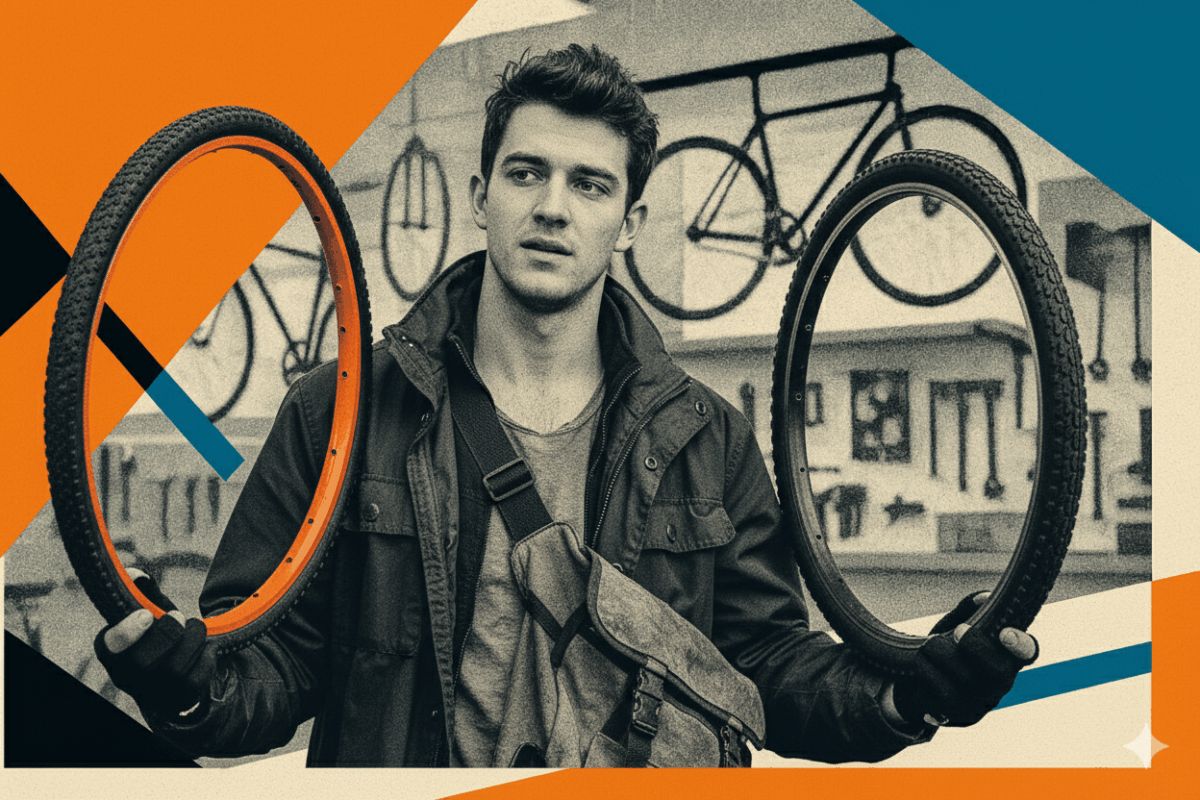
The rear tire takes brutal abuse. Every pedal stroke transfers directly to the rear contact patch. Add skidding to slow down or control speed, and you’re burning through rubber at 3-4x the rate of the front wheel. This isn’t a defect—it’s physics.
You can’t coast through debris. Road cyclists can lift off the pedals and coast over glass or gravel. You can’t. Every sketchy road surface gets full contact with your tires under load, increasing puncture risk dramatically.
Resistance equals suffering. That extra rolling resistance you barely notice on a geared bike? On fixed gear, you feel every watt. A slow, heavy tire doesn’t just cost you speed—it makes every ride harder.
This means your tire selection process needs to start with one question: How do you actually ride?
The Only Three Specs That Actually Matter
Forget TPI counts, sidewall colors, and brand hype. For fixed gear riding, only three specifications determine whether a tire works for you.
1. Rubber Compound: Grip vs Durability
Tire compound is the actual rubber formulation that contacts the road. You can’t have maximum grip and maximum durability—it’s always a trade-off.
Soft compounds (like Continental’s Black Chili or Vittoria’s Graphene) grip better in corners and wet conditions. They feel planted when you’re carving through traffic or bombing descents. The catch? They wear faster. For track racing or performance street riding where you’re not skidding, soft compounds make sense.
Hard compounds last longer but sacrifice some grip. They feel more wooden through corners and can get sketchy in rain. But if you’re skidding daily or just commuting in straight lines, hard compounds save you money on replacement tires.
The decision: If you skid regularly, don’t waste money on premium compounds for your rear tire—you’re just burning cash. Save soft compound tires for your front wheel where grip actually matters for steering and braking.
2. Tire Width: The Sweet Spot Is 25c
Forget everything you’ve heard about “narrow is faster.” Modern testing proves that 25c tires at 85-95 PSI often outperform 23c tires at 110+ PSI on real roads. The wider tire conforms to imperfections better, reducing energy loss from vibration.
Width Guide
23c: Track only. Too harsh and puncture-prone for streets
25c: The Goldilocks width—fast, comfortable enough, fits most frames
28c: Rough roads, comfort-first riding, riders over 180 lbs
32c+: Touring, gravel sections, maximum comfort (but slower acceleration)
The decision: Unless you’re racing on a velodrome, go with 25c. It’s the best balance of speed, comfort, and puncture resistance for street riding. If your roads are terrible, bump up to 28c and drop the pressure to 80-85 PSI.
3. Puncture Protection: How Much Do You Actually Need?
Puncture protection comes in three levels, and each has real trade-offs you need to understand.
No protection (race tires): Light, fast, supple—and you’ll flat constantly on city streets. These tires are designed for smooth velodromes, not glass-covered bike lanes. Unless you’re only riding track, skip them.

Light protection (performance tires): A thin belt under the tread blocks most punctures without adding much weight. Tires like the Continental GP5000 use advanced materials (Vectran, Kevlar) that punch way above their weight. You’ll still flat occasionally, but not constantly.
Maximum protection (commuter tires): Thick belts and reinforced casings that stop everything. Tires like the Continental Gatorskin can go 2,000+ miles between flats in urban hellscapes. But they’re heavier, harsher, and noticeably slower.
The decision: Match protection to your commute reality. Riding clean bike paths? Light protection is fine. Commuting through construction zones and broken glass daily? Maximum protection saves you hours of roadside repairs, even if it costs you 1-2 mph average speed.

Fun Fact:
Skid patches are calculated by reducing your gear ratio to its simplest form. A 49/17 ratio gives you 17 skid patches, while a 44/16 only gives you 4. More patches = longer tire life because your tire wears at different points rather than the same spot repeatedly.
Match Tires to Your Riding Style
Now that you understand the specs, here’s how to actually choose based on what you do on your bike.
If You Skid Regularly
Stop buying expensive rear tires. Period.
If you’re skidding to slow down or control speed, you’re going to destroy your rear tire in 4-8 weeks regardless of what you spend. A $70 premium tire lasts exactly as long as a $25 budget tire when you’re laying rubber daily. Save your money.
What to prioritize: Cheap price, decent grip, and a compound soft enough to actually slide predictably. Ignore everything else. You’re replacing this tire monthly—treat it as a consumable, not an investment.
What to avoid: Premium compounds, maximum puncture protection (adds weight for no benefit), and anything over $35 per tire. You’re burning money.
If You Commute Daily
Your priority is not flatting on the way to work. Everything else is secondary.
Commuters deal with the worst road conditions—construction debris, broken glass, random sharp objects—while needing reliability. Missing work because you flatted again is worse than losing 1 mph average speed.
What to prioritize: Maximum puncture protection, durability over multiple thousand miles, and predictable wet-weather grip. You want tires that just work without drama.
What to avoid: Race tires with minimal protection, ultra-light tires that sacrifice durability, and soft compounds that wear out in 1,500 miles. Your commute isn’t a race—reliability matters more than speed.
If You Ride for Performance/Speed
You want tires that feel fast and grip confidently without flatting constantly. This is where premium tires actually make sense.
Performance riders typically use brakes (not skidding), maintain their bikes well, and ride on decent roads. You can run lighter tires with less protection because you’re not abusing them like skidders or dealing with construction-zone commutes.
What to prioritize: Low rolling resistance, supple casing (high TPI), premium compound for grip, and light weight. These specs actually feel different when you’re riding fast.
What to avoid: Heavy commuter tires (they’re slow and harsh), rock-bottom budget tires (poor grip and feel), and maximum puncture protection (adds weight you don’t need if you’re riding carefully).
The Smart Money Strategy: Different Tires Front and Rear
Stop running matching tires front and rear. It’s burning money.
Your rear tire often wears 3-4 times faster on a fixed gear—especially if you skid. Running $70 tires on both wheels means you’re replacing the rear every 1,000 miles while the front is barely broken in. That’s $70 every few months for no reason.
The front wheel handles steering, braking, and takes less abuse. That’s where you want your best tire. The rear just needs to survive your riding style.
Smart Pairings
- Skidders: Premium front + cheap rear (you’re destroying it anyway)
- Commuters: Performance front + bombproof rear (protection where punctures happen)
- Performance: Premium front + mid-tier rear (balanced approach)
Exception: Track riders should match tires front and rear. You need predictable handling at speed, and tire wear is minimal without street debris and skidding.
Tire Pressure Matters More Than You Think
You can buy the perfect tire and ruin it with wrong pressure. Here’s what actually works on fixed gear.
For 25c tires, start at 85-90 PSI and adjust from there. Heavier riders (+180 lbs) can bump to 95-100 PSI. Lighter riders might drop to 80 PSI for comfort. The max PSI printed on the sidewall? That’s a liability number, not a recommendation.
Lower pressure isn’t slower on real roads. A 25c at 85 PSI often outperforms a rock-hard 23c at 110 PSI because it conforms to imperfections instead of bouncing off them. Lower pressure also means better grip, more comfort, and fewer pinch flats when you hit potholes.
In wet conditions, drop pressure another 5-10 PSI. The increased contact patch dramatically improves traction when roads are slick. Avoid running super-high pressures (110+ PSI) in rain—you’ll slide unpredictably.
Three Solid Tire Options to Consider
If you’ve read this far and just want specific recommendations, here are three tires that cover the major use cases. These aren’t the only good options, but they’re proven choices that match the decision framework above.
For Skidding: Vittoria Zaffiro ($20-25)
The wire bead Zaffiro is exactly what skidders need: cheap and grippy enough to slide predictably. At $20-25, you won’t cry about replacing it every 4-6 weeks. The compound is soft enough for controlled skids without being so premium that you’re wasting money.
Weighs 370g for 25c, but weight doesn’t matter when you’re laying patches. If you want slightly better quality, the Zaffiro Pro ($30-35) has a folding bead and Graphene compound.
For Performance: Continental Grand Prix 5000 ($70-80)
The GP5000 is what serious street riders run on their front wheel. It’s legitimately fast—12% lower rolling resistance than its predecessor—while maintaining real puncture protection.
The Black Chili compound grips confidently in wet conditions, and the 330 TPI casing smooths out rough pavement without feeling fragile. At 220g for 25c, it’s light but not terrifying. Riders regularly get 3,000-5,000 miles out of a front GP5000. Hard to mount, but worth it.
For Commuting: Continental Gatorskin ($45-55)
When flat protection matters more than speed, the Gatorskin is the answer. It scores 18 out of 18 in puncture resistance tests—the highest on record. Riders report 2,000+ miles between flats in glass-covered cities.
You’ll feel the harsher ride and slightly higher rolling resistance, but that’s the trade-off for virtually never flatting. At 240g for 25c, it’s not heavy by commuter standards. Run it on your rear wheel where most punctures happen.

Quick Note on Budget Tires
If you need something even cheaper, the Continental Ultra Sport III ($25-30) punches above its weight. It uses decent tech (PureGrip compound, 180 TPI) at entry-level pricing. Rolling resistance is about 40% higher than the GP5000, but it costs one-third the price. Good for training or backup wheels.
Frequently Asked Questions (FAQ)
It depends entirely on your riding style. Skidders burn through rear tires in 4-8 weeks. Commuters with brakes might get 2,000-4,000 miles. Track riders can run tires until the casing shows. Check for flat spots, sidewall damage, and exposed casing threads—those are your “replace now” signals.
Yes. Fixed gear bikes use the same 700c wheel size as road bikes, so any road tire will fit. The difference is how you’ll use them—fixed gears put more stress on the rear tire from constant power transfer and skidding, so prioritize durability over pure speed unless you’re only riding the track.
No. Run slightly higher pressure in the rear (2-5 PSI more) because it carries more weight and takes more abuse on fixed gear. For 25c tires, try 85 PSI front and 90 PSI rear as a starting point, then adjust based on your weight and road conditions. This improves both handling and tire wear.
Not really. Modern tire compounds (like Continental’s Black Chili or Vittoria’s Graphene) grip well in both wet and dry conditions. The bigger wet weather concern is tire pressure—drop it 5-10 PSI in rain for better traction. Avoid rock-hard tires (110+ PSI) in wet conditions; they’ll slide unpredictably.
It depends on your riding style. For your front wheel? Absolutely—a $70 GP5000 that lasts 5,000 miles is better value than a $25 tire you replace every 1,500 miles. For your rear wheel if you skid? No—you’re destroying it in weeks regardless of price. Match your tire investment to how long it’ll actually last.
Final Thoughts
Choosing fixed gear tires isn’t about finding the single “best” option—it’s about matching rubber to your riding reality.
Skidding daily? Stop wasting money on premium rear tires. Commuting through construction zones? Prioritize puncture protection over speed. Chasing performance on decent roads? Premium tires actually deliver meaningful improvements.
The smartest riders run different tires front and rear, matching each wheel to its actual job. Your front needs grip and handling. Your rear needs to survive your riding style. Stop treating them the same.
And remember: tire pressure matters more than most riders think. Get the pressure dialed, and even mid-tier tires perform surprisingly well.

